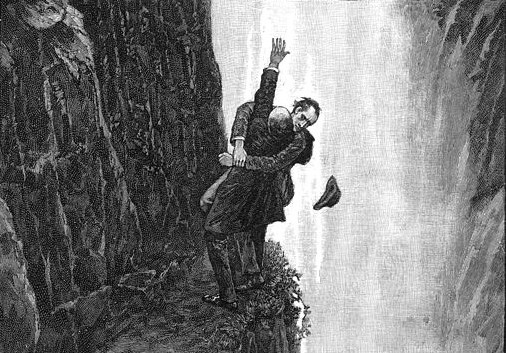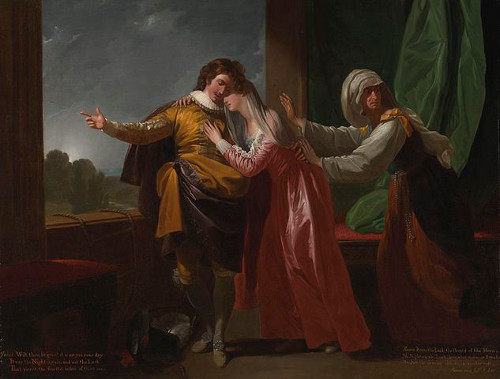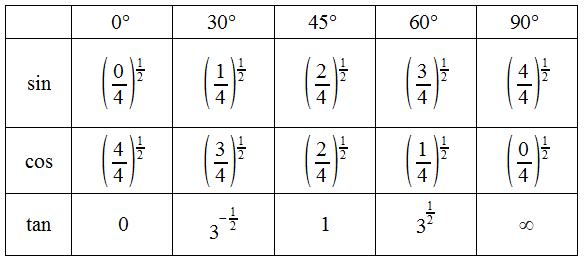
Can two dice be weighted so that the probability of each of the numbers 2, 3, …, 12 is the same?

Can two dice be weighted so that the probability of each of the numbers 2, 3, …, 12 is the same?

Sherlock Holmes is walking through the valley of Reichenbach Fall. On a clifftop overhead, Moriarty has perched a boulder. When he pushes it, it will have a 90 percent chance of killing Holmes. Just as he is about to send it over the edge, Watson arrives at the clifftop. Watson can’t see Holmes, so he’s not able to push the boulder safely clear, but he reasons that it’s better to push the boulder in a random direction than to let Moriarty aim it carefully. So he pushes the boulder off the cliff in such a way that Holmes’ chance of dying is reduced to 10 percent.
Unfortunately the boulder crushes Holmes anyway. Watson’s push decreased the chance of Holmes’ death, but it also caused it.
What are we to make of this? Generally speaking, it seems true to say that Pre-emptive pushing prevents death by crushing. That is, Watson’s push was of the sort that made it less likely that Holmes would die — if the scenario were re-enacted many times, with the boulder pushed sometimes by Watson, sometimes by Moriarty, Watson-type pushes would result in fewer deaths. But it also seems true to say that Watson’s pushing the rock caused Holmes to die. But cause and prevent are antonyms. How can both of these statements be true?
(Christopher Read Hitchcock, “The Mishap at Reichenbach Fall: Singular vs. General Causation,” Philosophical Studies, June 1995.)
A bisecting arc is one that bisects the area of a given region. “What is the shortest bisecting arc of a circle?” Murray Klamkin asked D.J. Newman. Newman supposed that it was a diameter. “What is the shortest bisecting arc of a square?” Newman answered that it was an altitude through the center. Finally Klamkin asked, “And what is the shortest bisecting arc of an equilateral triangle?”
“By this time, Newman had suspected that I was setting him up (and I was) and almost was going to say the angle bisector,” Klamkin writes. “But he hesitated and said let me consider a chord parallel to the base and since this turns out to be shorter than an angle bisector, he gave this as his answer.”
Was he right?
List the first 2N positive integers (here let N = 4):
1, 2, 3, 4, 5, 6, 7, 8
Divide them arbitrarily into two groups of N numbers:
1, 4, 6, 7
2, 3, 5, 8
Arrange one group in ascending order, the other in descending order:
1, 4, 6, 7
8, 5, 3, 2
Now the sum of the absolute differences of these pairs will always equal N2:
| 1 – 8 | + | 4 – 5 | + | 6 – 3 | + | 7 – 2 | = 16 = N2
(Presented by Vyacheslav Proizvolov as a problem in the 1985 All-Union Soviet Student Olympiads.)
From Lee Sallows:

In an electrical network, if resistors x and y are placed in series their total resistance is x + y; if they’re placed in parallel it’s 1/(1/x + 1/y).
This offers an intriguing opportunity for self-reference. Each of the networks above contains four resistors with values 1, 2, 3, and 4, and the total resistances of the networks themselves are 1, 2, 3, and 4. So any one of the numbered resistors in these networks can be replaced by one of the networks themselves.
The challenge was posed by Sallows and Stan Wagon as a Macalester College “problem of the week”; these examples were discovered by Brian Trial, an automotive electronics engineer from Ferndale, Mich. Sallows points out that any such solution has a dual that results from changing series connections to parallel, and vice versa, and then replacing all resistors values by their reciprocals.
This leads to a further idea: The two sets of resistors below are “co-replicating” — the four networks on the left can be used to replace the four resistors in any of the networks on the right, and vice versa.

(Thanks, Lee.)

The goal of the Shakespeare programming language is to create code that reads like a Shakespearean play: Variables are “characters” that interact through dialogue, constants are represented by nouns and adjectives, and if/then statements are phrased as questions. (Insulting Macbeth assigns him a negative value.) Act and scene numbers serve as GOTO labels, and characters can tell one another to “remember” or “recall” values. The phrases “Open your heart” and “Speak your mind” output a variable’s numerical value and the corresponding ASCII character, respectively.
This program prints the phrase HELLO WORLD:
Romeo, a young man with a remarkable patience.
Juliet, a likewise young woman of remarkable grace.
Ophelia, a remarkable woman much in dispute with Hamlet.
Hamlet, the flatterer of Andersen Insulting A/S.
Act I: Hamlet's insults and flattery.
Scene I: The insulting of Romeo.
[Enter Hamlet and Romeo]
Hamlet:
You lying stupid fatherless big smelly half-witted coward! You are as
stupid as the difference between a handsome rich brave hero and thyself!
Speak your mind!
You are as brave as the sum of your fat little stuffed misused dusty
old rotten codpiece and a beautiful fair warm peaceful sunny summer's
day. You are as healthy as the difference between the sum of the
sweetest reddest rose and my father and yourself! Speak your mind!
You are as cowardly as the sum of yourself and the difference
between a big mighty proud kingdom and a horse. Speak your mind.
Speak your mind!
[Exit Romeo]
Scene II: The praising of Juliet.
[Enter Juliet]
Hamlet:
Thou art as sweet as the sum of the sum of Romeo and his horse and his
black cat! Speak thy mind!
[Exit Juliet]
Scene III: The praising of Ophelia.
[Enter Ophelia]
Hamlet:
Thou art as lovely as the product of a large rural town and my amazing
bottomless embroidered purse. Speak thy mind!
Thou art as loving as the product of the bluest clearest sweetest sky
and the sum of a squirrel and a white horse. Thou art as beautiful as
the difference between Juliet and thyself. Speak thy mind!
[Exeunt Ophelia and Hamlet]
Act II: Behind Hamlet's back.
Scene I: Romeo and Juliet's conversation.
[Enter Romeo and Juliet]
Romeo:
Speak your mind. You are as worried as the sum of yourself and the
difference between my small smooth hamster and my nose. Speak your
mind!
Juliet:
Speak YOUR mind! You are as bad as Hamlet! You are as small as the
difference between the square of the difference between my little pony
and your big hairy hound and the cube of your sorry little
codpiece. Speak your mind!
[Exit Romeo]
Scene II: Juliet and Ophelia's conversation.
[Enter Ophelia]
Juliet:
Thou art as good as the quotient between Romeo and the sum of a small
furry animal and a leech. Speak your mind!
Ophelia:
Thou art as disgusting as the quotient between Romeo and twice the
difference between a mistletoe and an oozing infected blister! Speak
your mind!
[Exeunt]
Because it’s written as a play, a program can be performed by human actors, but the drama lacks a certain narrative drive:
See Output.
From Lancelot Hogben’s Mathematics in the Making, an appealingly memorizable table of basic trigonometric values:

See Alison’s Triangle.
(Thanks, Tom.)
The sum of the proper divisors of 14316 is 19116.
The sum of the proper divisors of 19116 is 31704.
The sum of the proper divisors of 31704 is 47616.
The sum of the proper divisors of 47616 is 83328.
The sum of the proper divisors of 83328 is 177792.
The sum of the proper divisors of 177792 is 295488.
The sum of the proper divisors of 295488 is 629072.
The sum of the proper divisors of 629072 is 589786.
The sum of the proper divisors of 589786 is 294896.
The sum of the proper divisors of 294896 is 358336.
The sum of the proper divisors of 358336 is 418904.
The sum of the proper divisors of 418904 is 366556.
The sum of the proper divisors of 366556 is 274924.
The sum of the proper divisors of 274924 is 275444.
The sum of the proper divisors of 275444 is 243760.
The sum of the proper divisors of 243760 is 376736.
The sum of the proper divisors of 376736 is 381028.
The sum of the proper divisors of 381028 is 285778.
The sum of the proper divisors of 285778 is 152990.
The sum of the proper divisors of 152990 is 122410.
The sum of the proper divisors of 122410 is 97946.
The sum of the proper divisors of 97946 is 48976.
The sum of the proper divisors of 48976 is 45946.
The sum of the proper divisors of 45946 is 22976.
The sum of the proper divisors of 22976 is 22744.
The sum of the proper divisors of 22744 is 19916.
The sum of the proper divisors of 19916 is 17716.
The sum of the proper divisors of 17716 is 14316 again.

Why do the elements ytterbium, yttrium, terbium, and erbium have similar names?
Because all four of them were first discovered in ore from the same mine near the Swedish village of Ytterby.
Holmium, thulium, and gadolinium were discovered at the same source — leading some to call Ytterby the Galápagos of the periodic table.
12 + 22 + 32 + 42 – (52 + 62 + 72 + 82 + 92 + 102 + 112 + 122) + 132 + 142 + 152 = 0